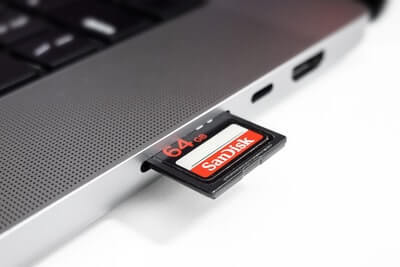Many users are reporting an update fail for macOS Monterey. There could be several reasons for this, and it will vary from one MacBook to the other. A list of macs compatible with Monterey is available on the Apple website.
Before you read further, it would be better if you just go through that list and see if your Mac is compatible according to them. However, if you are not using an old mac, trying to upgrade to macOS under normal circumstances will inevitably fail.
Therefore, you have to take an unconventional path to get the upgrade. I will link the blog post that will walk you through the process of getting Monterey on an unsupported Mac. Anyhow, if your mac year is included in the list, but you are still facing this issue, you’re in the right place.
In this blog post, I have extensively discussed a few methods that you can try out one by one and see if your Mac responds. So, let’s get right into it.
Also Read: How To Use Quick Notes In MacOS Monterey?
macOS Monterey Update Fail Method 1: Check The Internet Connection
For any major upgrades in the Mac or any operating system for that matter, it is vital to have a strong and stable internet connection. Downloading a heavy file like Monterey and installing it takes atleast an hour or two at the minimum.
During this process, your internet connection must remain stable and at high speed.

If that’s not the case and your network keeps dropping every now and then, your Mac will definitely interrupt the downloading process.
To rule that your internet connection is not the reason, do the following:
Step 1: Turn off Wi-Fi on your Mac.
Step 2: Then restart your Mac.
Step 3: After that, turn on Wi-Fi.
Step 4: Furthermore, now check if your Mac can download the update.
However, if the problem persists, change the Wi-Fi network as it can be possible that the Wi-Fi network is an issue. For example, you can connect your Mac to an Ethernet and then download the update.
macOS Monterey Update Fail Method 2: Remove Software Update Plist File
Step 1: Go to Finder on your Mac and tap on Go in the menu bar.
Step 2: Under the Go menu section, select Go to folder.
Step 3: In the Go to folder, type ~/Library/Preferences/ and click on Go.
Step 4: Mac will present you with a list of files. Here you have to scroll down and find com.apple.SoftwareUpdate.plist and delete it by dragging it to trash.
Step 5: Furthermore, restart your Mac.
Now when you try to update, Monterey should download on your Mac without any problem. However, if it does not, you can try the next solution.
Also Read: Apple To Replace Touch Bar In MacBook Pro With Apple Pencil Dock
macOS Monterey Update Fail Method 3: Make Space
Downloading a heavy upgrade requires enough free space. If it doesn’t fit the criteria, your Mac is more likely to display the message that it cannot update Monterey. To do that do the following:
Step 1: First, click the Apple icon at the top-left corner of the screen.
Step 2: Then select ‘About This Mac’ under the Apple Menu.
Step 3: Now select Storage Tab to see how much space is being used and how much is free.
Step 4: If your Mac does not have enough space to download the update, delete all unwanted files and apps from your Mac to free up space.
Step 5: Then restart your Mac.
Step 6: Now, try to download the update.
However, if you are still getting the update failed error, then maybe storage is not the issue.
macOS Monterey Update Fail Method 4: Update Mac In Safe Mode
If you are using a Mac Intel Processor, do the following.
Step 1: First, turn off your Mac via Apple Menu and click on Shut Down.
Step 2: Then wait for about ten seconds, or press the Power button or Touch ID.
Step 3: After pressing the Power button/Touch ID, immediately hold down the Shift key until the login window appears.
While holding the Shift key, the Apple logo will appear. But don’t leave the Shift key when you see the Apple logo. Instead, keep holding it until you see the login window.
Step 4: Then, enter your login details. If your Mac is encrypted with File Vault, you will be asked to log in twice.
Step 5: Now, you can download the update without any problem.
If you are using a Mac with Apple Silicon:
Step 1: First, turn off your Mac via Apple Menu.
Step 2: After that, wait for about ten seconds, and then hold down the Power button/Touch ID until the startup options window appears.
Step 3: Now, you can see the available startup disks and options. Here select your startup disk.
Step 4: Then hold down the Shift key and click Continue.
Step 5: After that, click Continue in Safe Mode while holding the Shift key.
Step 6: Now, release the Shift key and wait until you see the login window.
Step 7: Then, enter your login credentials.
Step 8: Now download the update and check if any issues occur.
To get out of the safe more restart your Mac via the Apple menu and press restart.
Must Read: How To Install macOS Monterey On Unsupported Mac?
macOS Monterey Update Fail Method 5: Reset PRAM/NVRAM
Step 1: First, turn off your Mac via the Apple menu and click on Shut Down.
Step 2: Then wait for a few seconds, and press the Power button/Touch ID to turn on your Mac.
Step 3: After pressing the Power button/Touch ID, immediately hold down the Option + Command + P + R keys simultaneously until you hear the startup sound for the second time.
Moreover, if you are using a T2 security chip with your Mac, hold down the keys until the Apple logo appears and disappears for the second time.
Step 4: Then wait until your Mac restarts. Sometimes your Mac may take up to fifteen minutes to restart.
macOS Monterey Update Fail Method 6: Fix Disk Errors In Recovery Mode
If you are using an Intel-based Mac:
Step 1: First, shut down your Mac, then press the Power button/Touch ID to turn it on.
Step 2: After pressing the Power button/Touch ID, immediately hold down the Control + R keys at the same time until the Apple logo appears.
Step 3: Then wait for some time. Furthermore, the macOS utilities window will appear with four options.
Step 4: Here, select ‘Disk Utility’ and then click “Continue.”
Step 5: Now select your startup Disk (Macintosh HD) for which you want to fix errors.
Step 6: Then click on ‘First Aid.’
Step 7: After that, select “Run” in the pop-up box. Now your Mac will check for disk errors and wait until the process is finished.
Step 8: Then click Done and close Disk Utility.
Step 9: Now, restart your Mac via the Apple menu and tap on Restart.
If you are using a Mac with Apple Silicon
Step 1: First, shut down your Mac.
Step 2: Hold down the Power button/Touch ID until the startup options window appear.
Step 3: Here, select Options and then click on Continue.
Step 4: Wait for a few seconds, and then the macOS utilities window will appear with four options.
Step 5: Select disk utility and then click on Continue.
Step 6: Then follow the on-screen instructions for an Intel-based Mac, which I have described before.
Should Read: Apple MacBook Pro: M1 Pro And M1 Max Explained
Method 7: Install Apple SSD And Get A DFU
A lot of MacBook Pro users are receiving a specific message that says MacOS a required firmware update could not be installed. Compatible internal storage is needed in order to update.

Keep in mind they are getting this message after they have tried all the above methods I have discussed in this blog post. Whether trying to free up space or booting in your Mac in safe mode, or even after an SMC reset. Moreover, many have also tried to use a bootable USB installer, after which this error message pops up.
In that case, I have a solution for that too. First, all you have to do is install an internal Apple SSD with an NVMe drive to update the firmware and operating system boot loader. Secondly, you can also try to install Monterey in DFU mode.
Conclusion
To install the Apple SSD, you should contact your nearest Apple customer care center. It is best to let the professionals take care of the complicated process. Moreover, they can decide better depending on the model of your Mac if you need an internal SSD or install from the device firmware update.
Read: How To Fix Mac Keeps Restarting After Big Sur Update?


























![The Apex Legends Digital Issue Is Now Live! Apex Legends - Change Audio Language Without Changing Text [Guide]](https://www.hawkdive.com/media/5-Basic-Tips-To-Get-Better-On-Apex-Legends-1-218x150.jpg)








